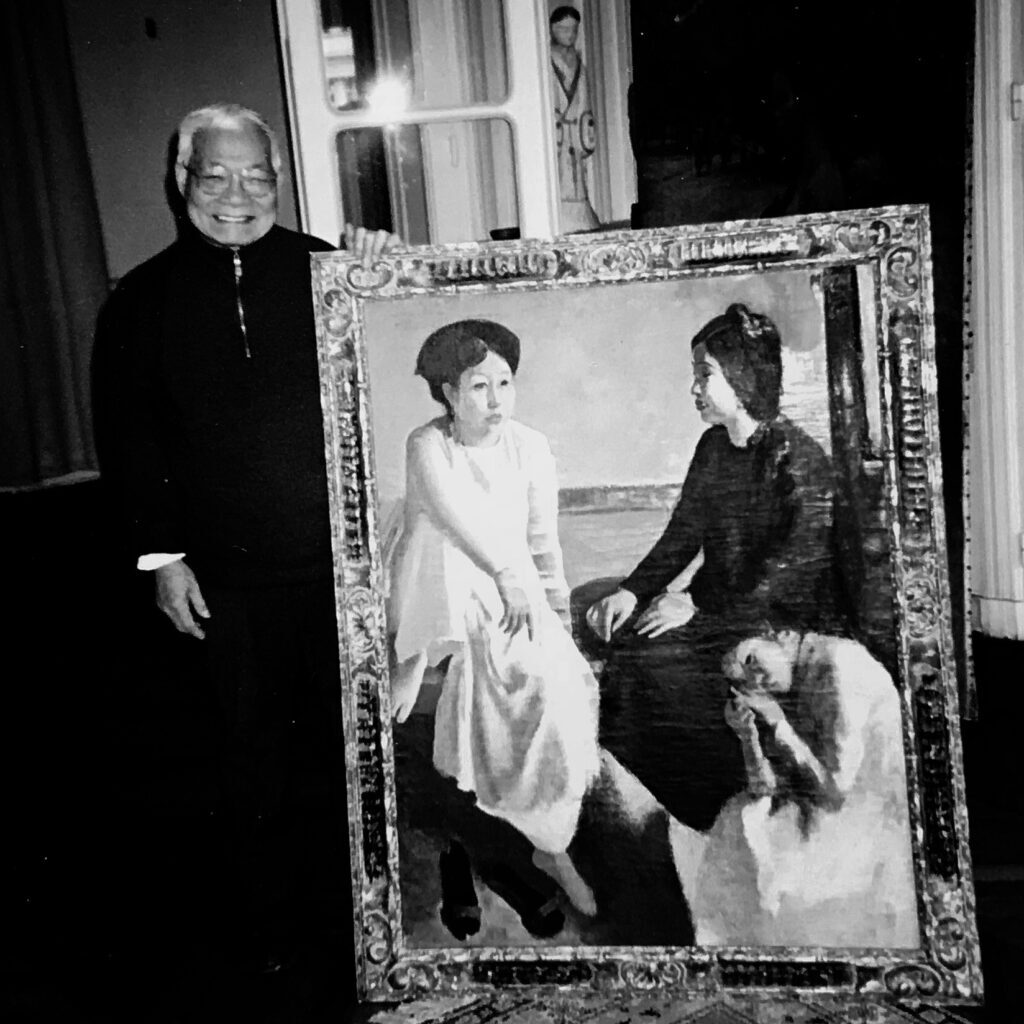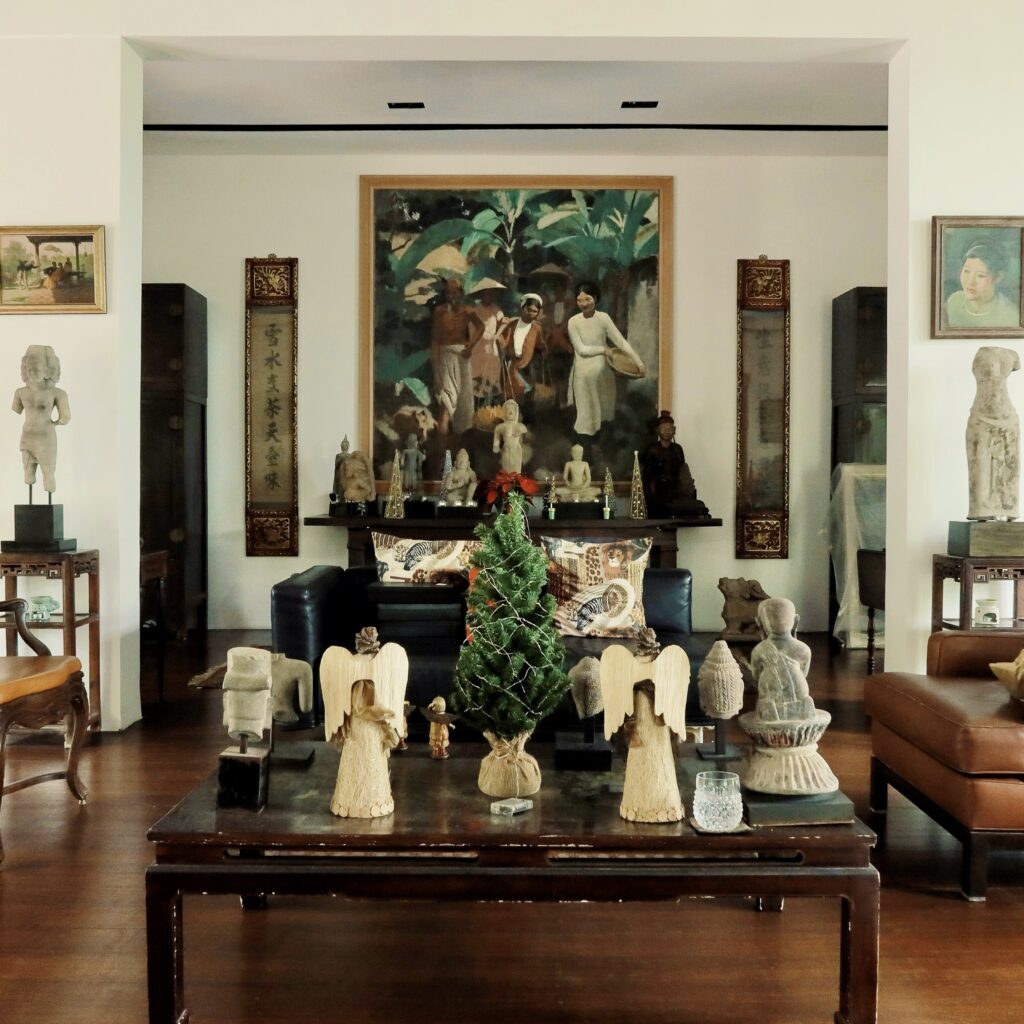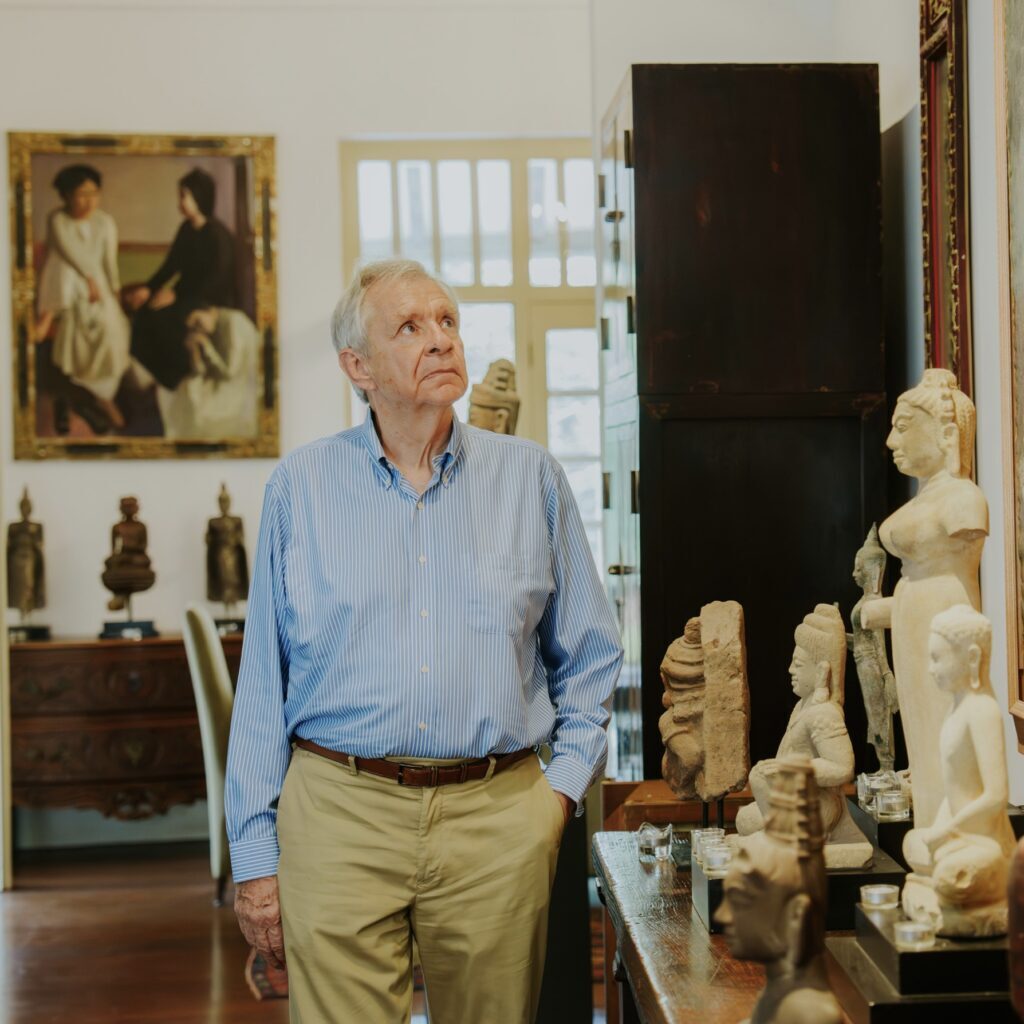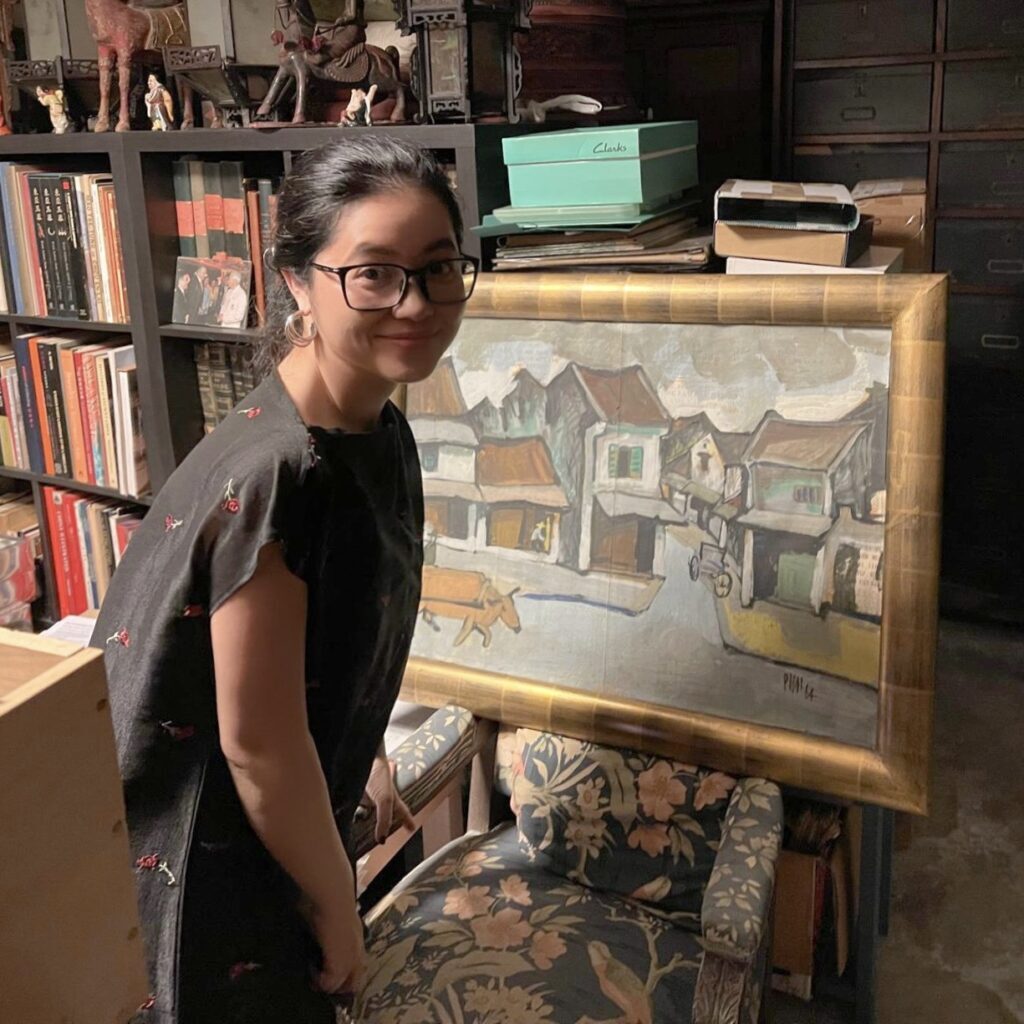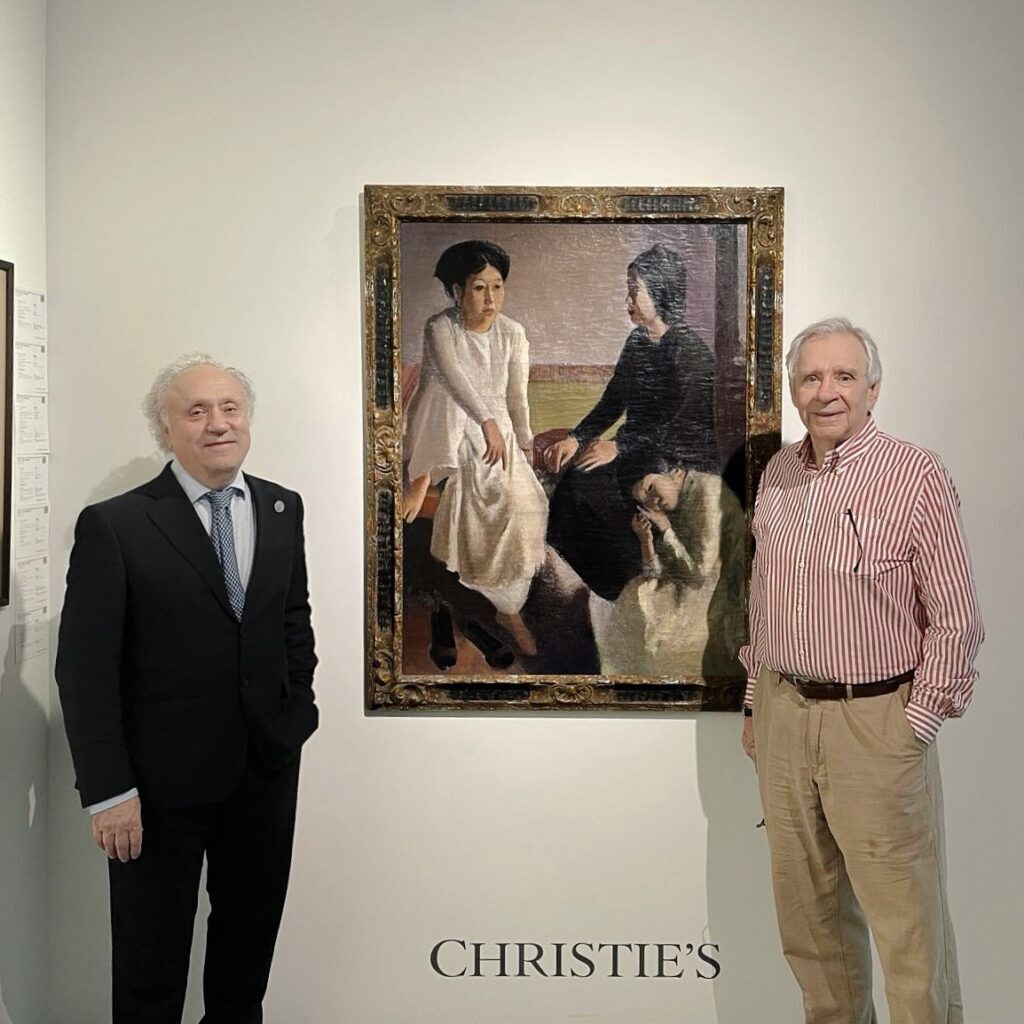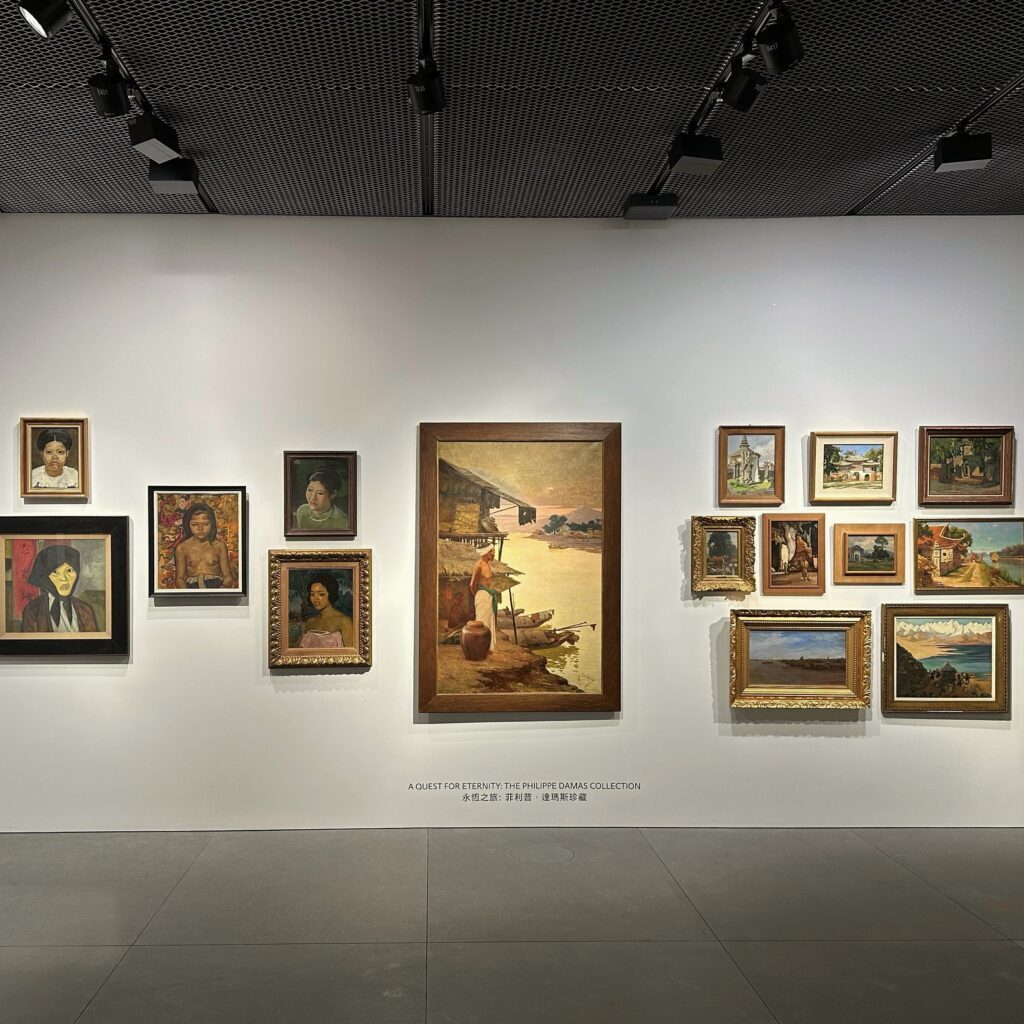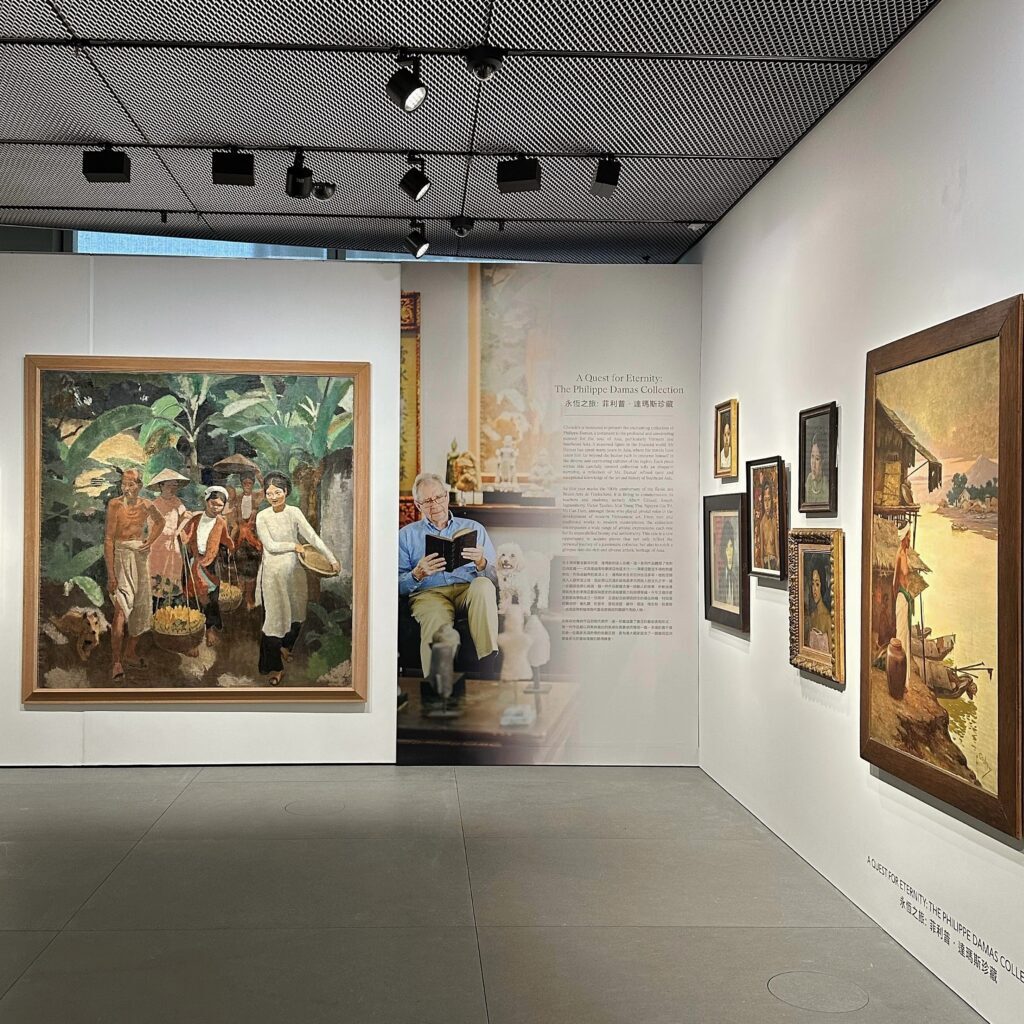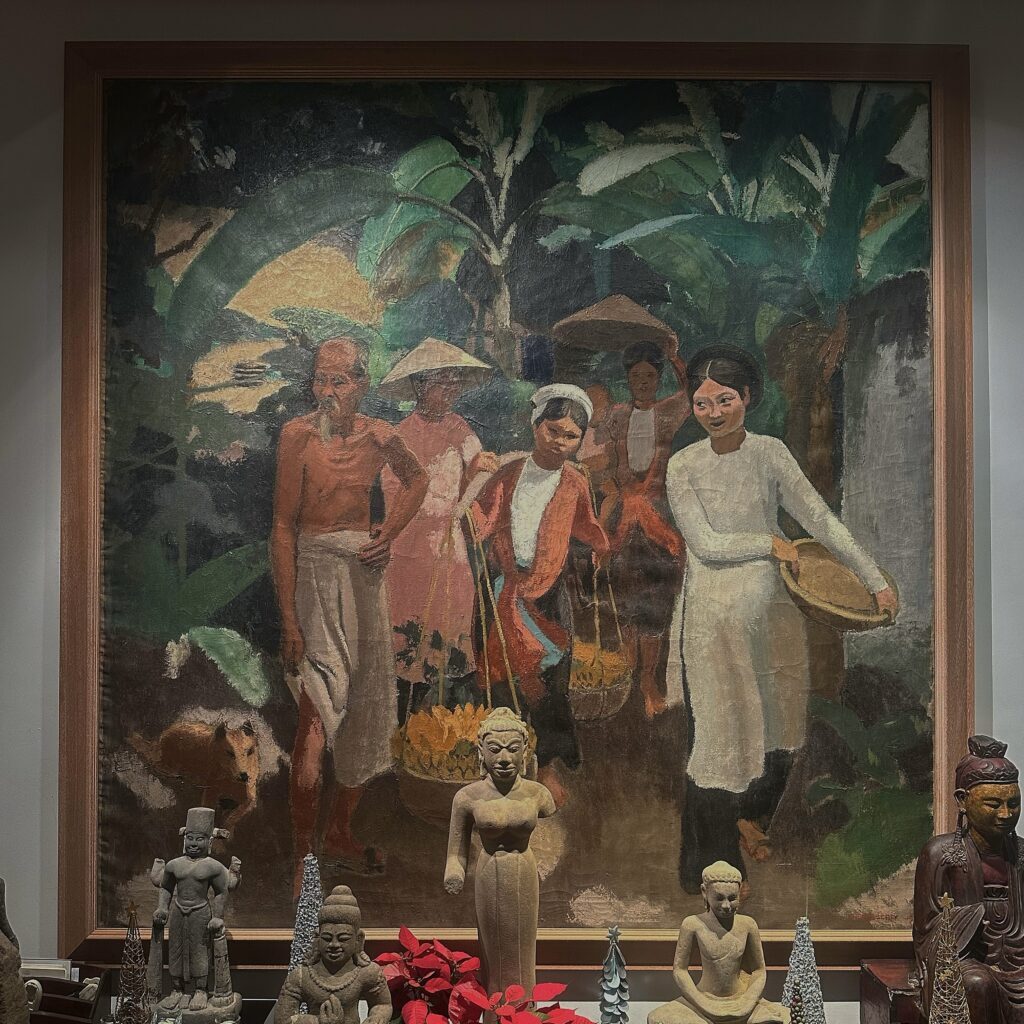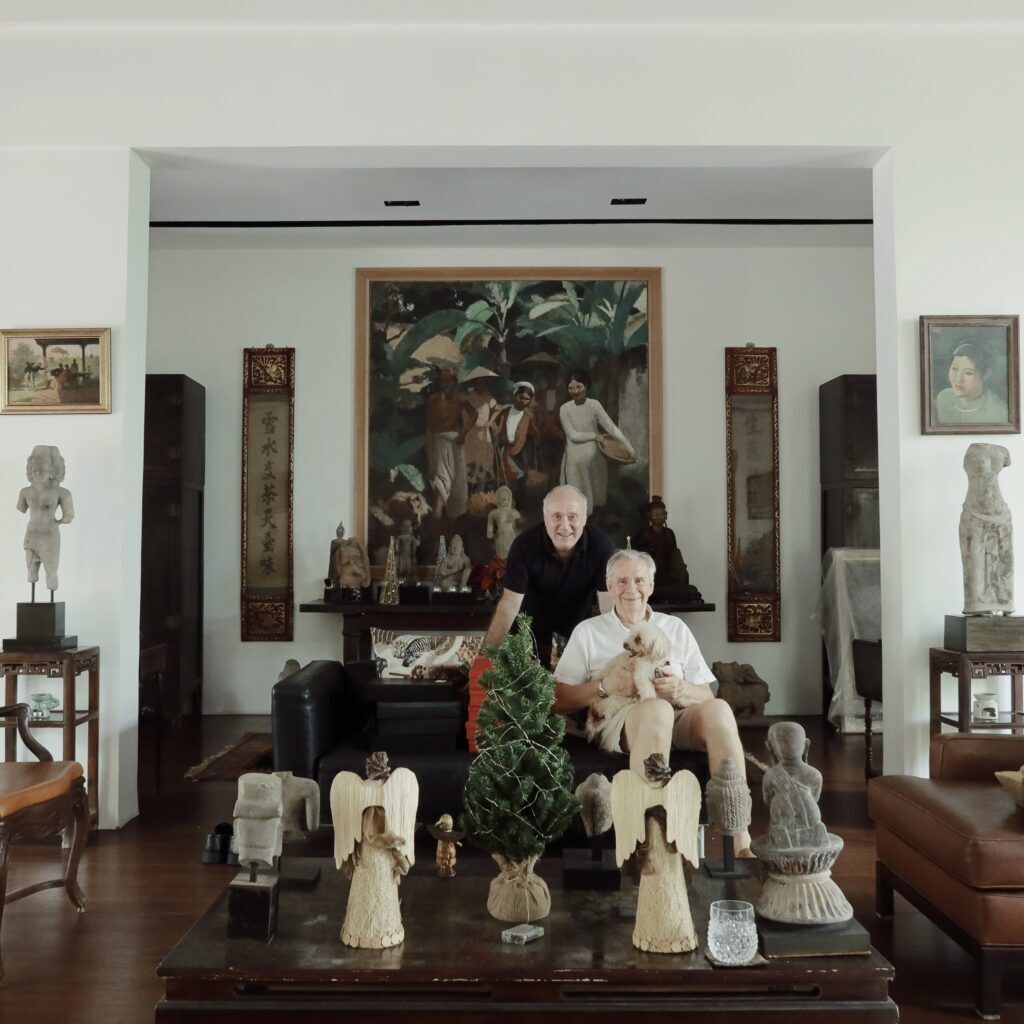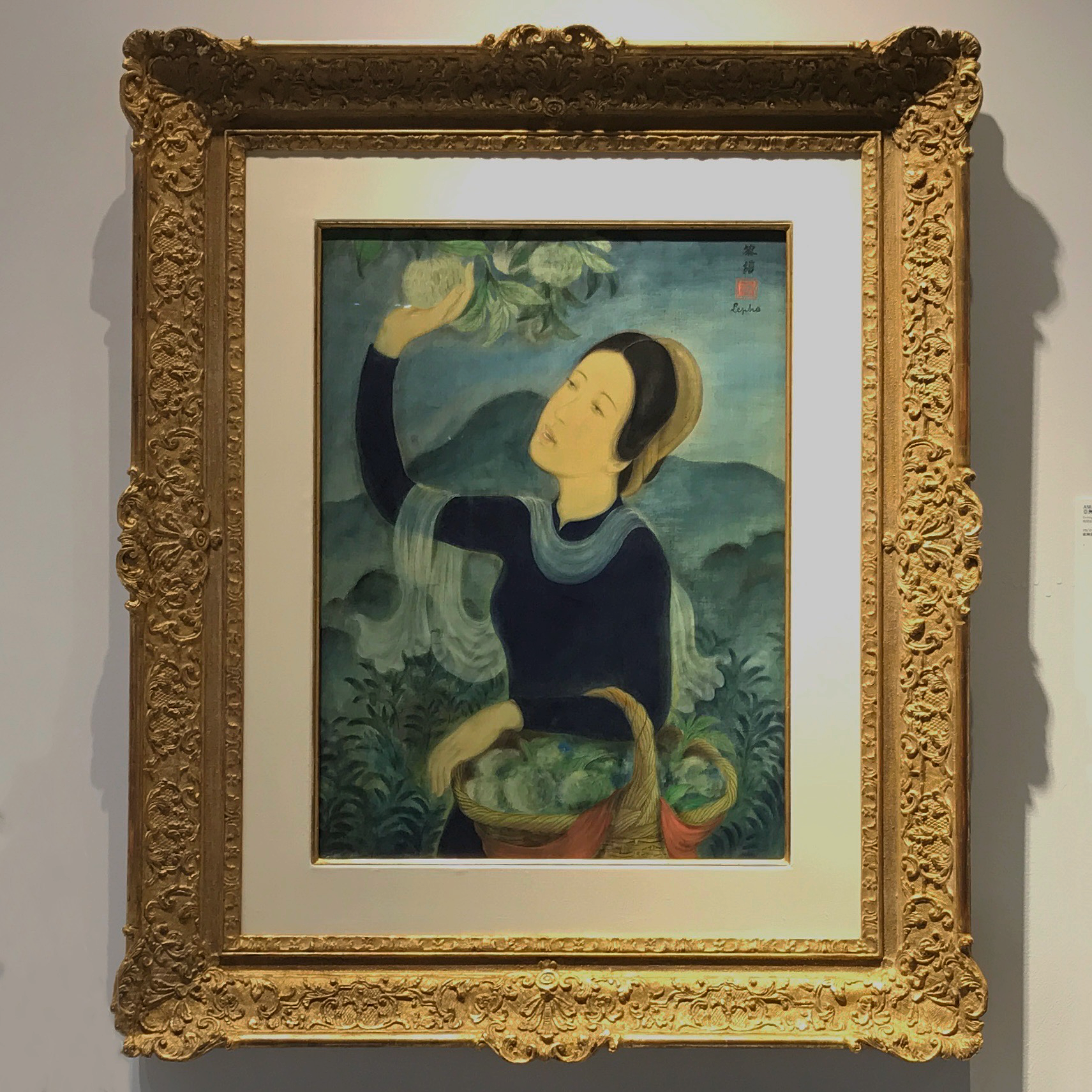
Le Pho (1907-2001)
La Jeune Fille Aux Pommes-Cannelle
signed in Chinese and signed 'Le Pho' (upper right)
ink and gouache on silk
60.5 x 45 cm. (23 7/8 x 17 3/4 in.)
Painted in 1938
one seal of the artist
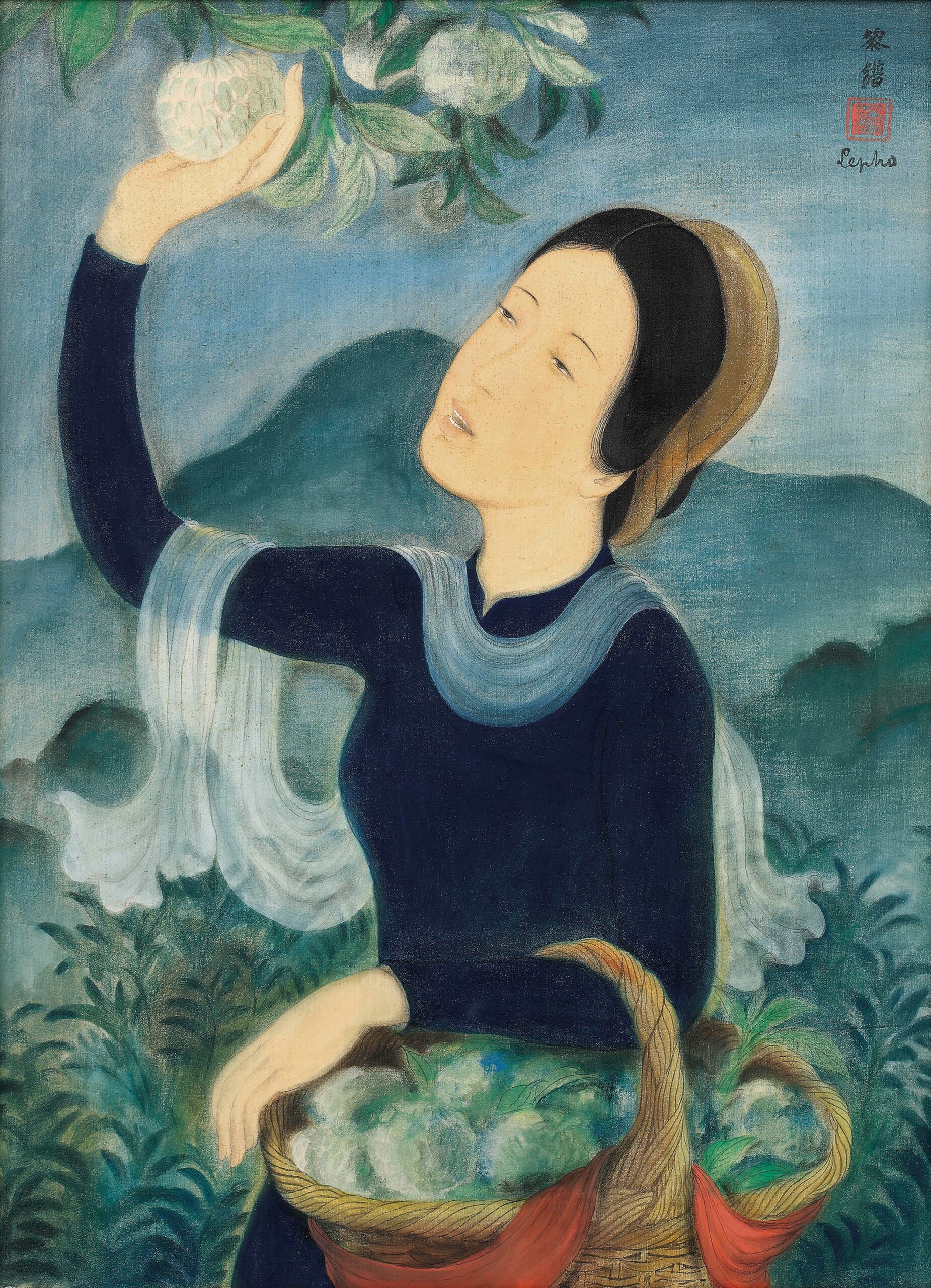
Christie’s is pleased to present an extraordinary work: a milestone in the master painter Le Pho’s creative oeuvre. Indeed, this work uses all the same classical elements usually found in all his paintings at that time: the fine features of the lady’s face, her headdress, her ao dai , her light scarf – all set within a mountainous natural landscape. All these elements evoke memories and his longing for his native land of Tonkin. What makes this particular work outstanding is Le Pho going beyond the evocative description: he includes this work in a will for symbolization based on a knowledge acquired through watching and studying European masters during his first trip to France in 1931-1932.
We know that at the time, even if he initially came just for the Colonial Exhibition in Paris, he also stayed in France and traveled through Europe to discover, what would continue fascinating him for the rest of his life – the purity of the Primitives, their attention to detail, and the careful use of the whole surface of the canvas.
This painting combines in the most original way the usual grace and elegance of a Tonkinese lady and evokes the imagery of Eve, a universal theme studied by many of his influences but treated here with Le Pho’s very own unique and distinctive style. As per the well-known tale from the bible, God forbade the consumption of the forbidden fruit, yet against His will Eve ate the apple and even seduced and mislead Adam to eat some too. God was then forced to expel Adam and Eve from Paradise and made them mortal. This founding myth never ceases to inspire commentaries, interpretations and representations at a universal level. We can easily imagine the painter observing carefully the famous work, The Fall of Man by Pierre Paul Rubens (1628-1629), observing works by Raphael (1483-1520), Titian and also Jan Brueghel the Elder (1525-1569) all of whom also expressed this evocative theme but Le Pho added a deeply personal take on it. In Le Pho’s representation, the apple is not the presumed red apple of biblical myth, but a custard apple – a fruit so typical in his home country but now become exotic in this foreign land. Le Pho hence reframes the biblical story through a distinctively Vietnamese frame.
In front of the powerful grace of the Tonkinese Lady, the religious aspect recedes. Her facial traits express a definite sensuality in her gestures – with her right hand, she seems to caress the fruit rather than grasp it. Her left hand surrounds the basket of fruit with a protective grace. To highlight the subtle relationship between the lady and the custard apples, Le Pho used greens and soft whites in contrast to the dominant cool shades of blue. Le Pho distances himself from negative interpretations of theme such as Rubens’ distressingly titled Adam and Eve or the Fall of Man, and presents instead a version celebrating sensual freedom and enlightenment.
At the time a young man in his 30s, ambitious in his work, trusting in his destiny and with the modesty known to the greatest, he created this beautiful art work – balancing sensuality with elegance in one of the defining characteristics of Le Pho’s work. He undoubtedly appreciated the female aesthetic, and arguably presented the most beautiful, elegant and sincere depictions of women within the history of female pictorial representation in 20th Century Vietnamese art.
The following verse in poet Ho Huan Huong's In The Jackfruit echoes the elegant sensuality in Le Pho’s art:
“My body is like a jackfruit swinging on a tree
My skin is rough, my pulp is thick
Dear prince, if you want me pierce me upon your stick
Don't squeeze, I'll ooze and stain your hands”
Jean-Francois Hubert
Senior Expert, Vietnamese Art

